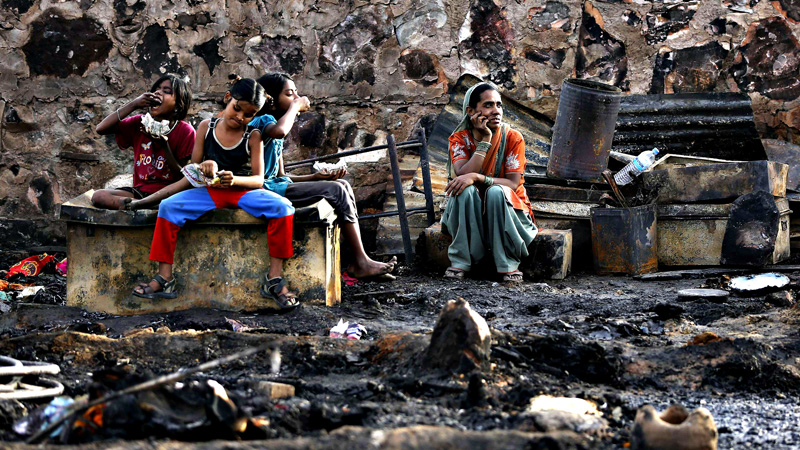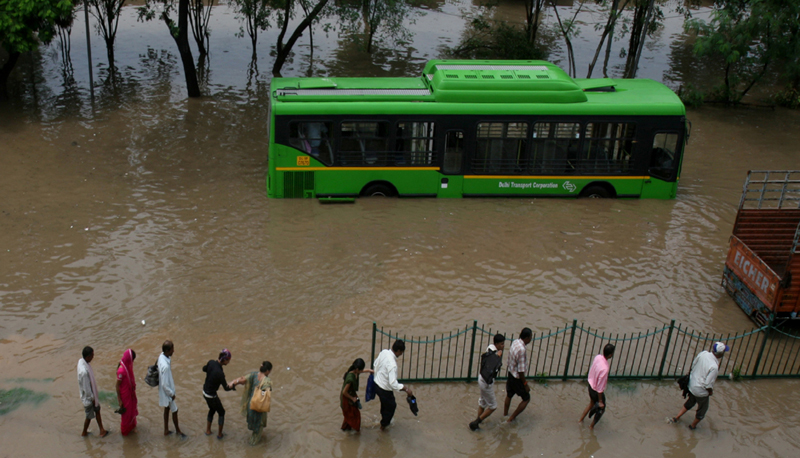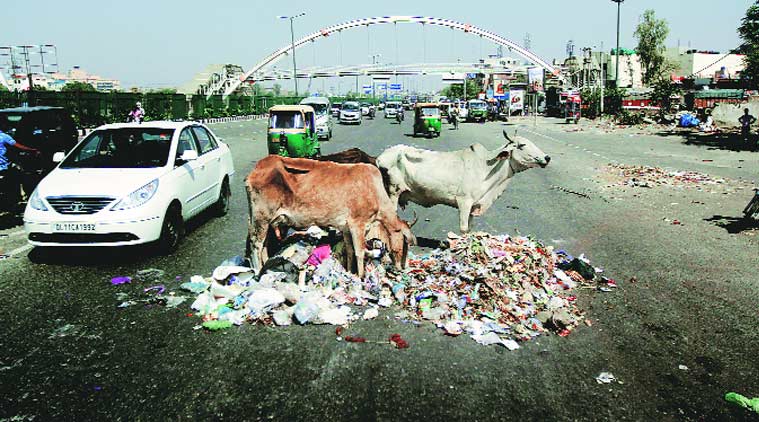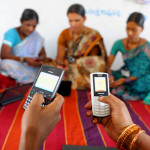What a Saturday! The Institute for Human Development, along with the IDRC and DFID planned a day-long symposium on ‘Making Cities Safe And Inclusive, with a regional focus on South Asia- particularly India and Pakistan’. They gathered the authors of the leading cutting edge research on urbanization for stimulating, information-packed presentations and panel discussions.


It was thrilling to participate in a symposium whose emphasis wasn’t initially on gender, yet brought such strong attention to women’s safety and adopted a feminist discourse. The question of safety and inclusion never excluded women. It was refreshing to hear the diverse ways we can think of women’s safety and how they are affected, beyond the realm of the police station.
It would be impossible for me, despite the amount of notes I took throughout the day, to re-transcribe everything I learned; however, these are the highlights I found the most interesting in the day-long tsunami of information I received.


As Alakh N. Sharma, Cam Do, and Chairman S.R. Hashim pointed out, this was definitely a very timely symposium. With all the attention women’s safety in urban areas has been getting, and the Sustainable Development Goals, the symposium could not have come at a better time.
The discussion started on the issue of urban violence- so on the safety aspect of Saturday’s question- the different kinds of violence and its prevalence urban areas face, and the challenges they present. The morning discussions made asking the question ‘who is safe from what kind of violence?’ the dominant question to be answered.


The pattern that seemed to arise from multiple discussants and their research was that a group of factors aggravated inequalities, and thus in turn violence in urbanized areas. It’s a process in which different elements, such as unemployment, especially youth unemployment, discrimination, poverty, access to resources and so on, create a vicious cycle of violence. The discussants agreed that access to livelihoods and discrimination were the driving factors of violence rather than low purchasing power. The rapid urbanization that was largely unplanned marginalized many, via processes of exclusion from jobs and discrimination of minorities, which leads to radicalization and violence.
Along the way, some myths were debunked by the exhilarating presentation given by Professor Kundu. Apparently, when you look at the numbers, the growth rate in India of urbanization is stagnating or decreasing- yet the dominant narrative, which policymakers use, says the opposite. The presentation pointed out that India was still mainly rural, and that urbanization levels at 30% were much less than the world average. Professor Kundu pointed out another eye opening fact, it is inequality in access to health and education, rather than consumption per capita, which are the highest in cities. The participants made it obvious that violence is an assemblage, complex, and ‘holistic’, whose characteristics are manifested and exacerbated in cities.
As the discussion continued, it became increasingly important to understand how one defines safety and security? How does exclusion happen? How are these patterns of exclusion -political, social and economic- produced and reproduced by different stakeholders? So when looking at cities, conducting research, creating policies and programs, one must answer the question: Safe cities for whom? Men? Women? A certain religious group? A socio-economic group? And how do you define safety? Or security?
The importance of these questions, and the challenges that arise when answering them, became particularly apparent in Professor Nausheen H Anwar’s presentation on Karachi. The importance of the relationship of states with different groups of people as a big factor in exclusion and violence, had already been highlighted by O.P Mathur; however, it was exemplified in Anwar’s presentation, and in Professor Srivastava’s discussion on the state’s role in inflating land prices in Delhi causing massive marginalization and exclusion. Professor Anwar was able to show the different forms of violence, patterns of exclusion, and the general safety and security issues urban citizens face in Karachi. It showed how the urban poor faced multifaceted and multi level violence- structural, infrastructural and violence of disempowerment. She found that infrastructural violence is one of the main outcomes of high vulnerability (lack of water, low access to healthcare etc.)- especially in urban Pakistan, which is highly susceptible to flooding. The state also acted as a major perpetrator of violence and a cause of social violence. Furthermore, and interestingly, gender roles were enacted violently, demonstrating that there are clear spillovers between pubic and private violence.
Therefore looking at vulnerabilities and capacities could help define problems, risks, and help guide policies and action to respond to these vulnerabilities. Which leads us once again to violence against women (VAW), which many esteemed speakers, including Kalpana Viswanath, Rahsmi Singh and Professor Kundu were particularly vocal about. Considering the deplorable sex ratio in India, the prevalence of violence women face in cities (90% of women have suffered some form of violence in the last 12months in cities) and so on, tey highlighted the need for the inclusion of women’s safety in urban planning itself and in policy-making,
Therefore, ending gender based violence is integral to safety. As D. N. Gautam said, there is no such thing as public and private violence, all violence is public as it has penal provisions. That statement is of primordial importance as it zeroes in on domestic violence and child marriage, and provides a very clear and straightforward perspective on it. It means Kalpana Viswanath is right: we need holistic solutions to everyday violence. We don’t need just police officers at bus stops, we need a comprehensive strategy against violence in the city at large for safety inside and outside the home. Women’s issues and safety should be a stand alone goal, but more importantly it should be mainstreamed across targets and indicators.
The challenges for decision makers and experts therefore became apparent:
Mister S.K Das had an exhilarating presentation, which did a great job at highlighting the complexities of urbanization and urban planning on the ground and in practice. A point that is often stressed, yet little practiced, is the importance of including local actors from a diverse group who know the land the place, and the people, especially when foreign organizers are added to the mix. Das as a practitioner in urban planning, and as an architect, spoke of the need for local expertise and positive confrontation between stakeholders- and of the divide between local citizens, practitioners, and the implementers (companies building).
He made the gaps between theory and practice very apparent, and the need for bottom-up approaches and action. Lashmi Singh also spoke of the divide and the challenge as a government representative to bring everyone along in development. However, speaking of the democratic disconnect means questioning who will actually make cities safe?
Much discussion were also centered on whether smart cities were a good initiative, with the conclusion resulting in a less than glorious summary. But Mister Das proposed a much more interesting concept: Shared cities not smart cities. Shared cities provides a much better basis for safety and inclusion within urban spaces.
Speaking of cities, maybe as Sujata Patel suggests, it may be time to start thinking of cities as territories, to start including everyone, and every urban dweller, in philosophical terms, as well as practical ones. It seems the city has become a dystopia- where everyday violence is articulated in diverse ways, and illegality is promoted via legality, where some are told they don’t belong, even thoughtthey represent the backbone of the city in of itself.
Here are some broad conclusions and solutions to summarize the themes of the day:
- The question of ‘who’ is the most important one to continuously ask: who is this policy or action benefitting? who is included or excluded from the process? and who ended up being safe from what? Who is this city safe for? Think in the borrowed term of Das: Shared not smart cities.
- We desperately need a shift from top to bottom to bottom-up action and thought. There is a glaring gap between theory and practice; it needs to be closed. We need to bridge the gap between decision-makers and those on the receiving end of the action, through evidence-based policy and democratic decision-making. We’re talking giving priority to capacity building of existing at risk zones, rather than creating new cities or other, and understanding exclusionary processes in order to avoid repeating them.
- Working in a holistic manner instead of in silos, is primordial. Ending VAW, providing access to safe drinking water for all and sustainable urban planning, for example, are not separate fields or targets, they need to work together for all them to be achieved.
- How to make cities safe and inclusive? I’d say start by asking the question, who are they safe for now and why?
The Centre for Social Research (CSR) India is doing its part to make cities safe for all, by working hard to ensure women’s issues are heard and taken seriously by our policymakers and decision-makers. Our ‘Safe City is a Smart City’ conference in July had reunited many distinguished guests to discuss the issue, and found many concrete implementable solutions to the violence women face in cities.
On December 2nd, CSR and partners will be holding meeting on ‘Women and Victim Protection in Bavaria and India’, which will also have a large focus on women’s safety in urban areas.
Dr Ranjana Kumari and CSR India have long been advocating for awareness on VAW, inside and outside the home, including the punishment of the perpetrators and providing vital support to victims. These symposiums and meetings are a step closer to ending VAW, raisin awareness, and to showcase what we know: women are highly vulnerable, there is no such thing as private or public violence, working together with a bottom up approach should be the norm, victims should be helped not further blamed and so on.
Donation for Centre for Social Research to Join our effort in rehabilitating Domestic Violence
Discuss this article on Facebook




